Abstract
This paper considers the financial burden of parents caring for severely disabled children. A model to predict parents' out-of-pocket expenses and caregiving time demands is described. Discriminant analysis correctly classified high and low group membership for out-of-pocket expenses and caregiving time at 72 percent and 77 percent, respectively. Expected rates were 50 percent. Time spent caregiving was the best predictor for out-of-pocket expenses, and out-of-pocket expenses was the best predictor of caregiving time. A need-based approach for the distribution of resources that recognizes and adjusts for caregiving time and out-of-pocket costs is recommended.
Full text
PDF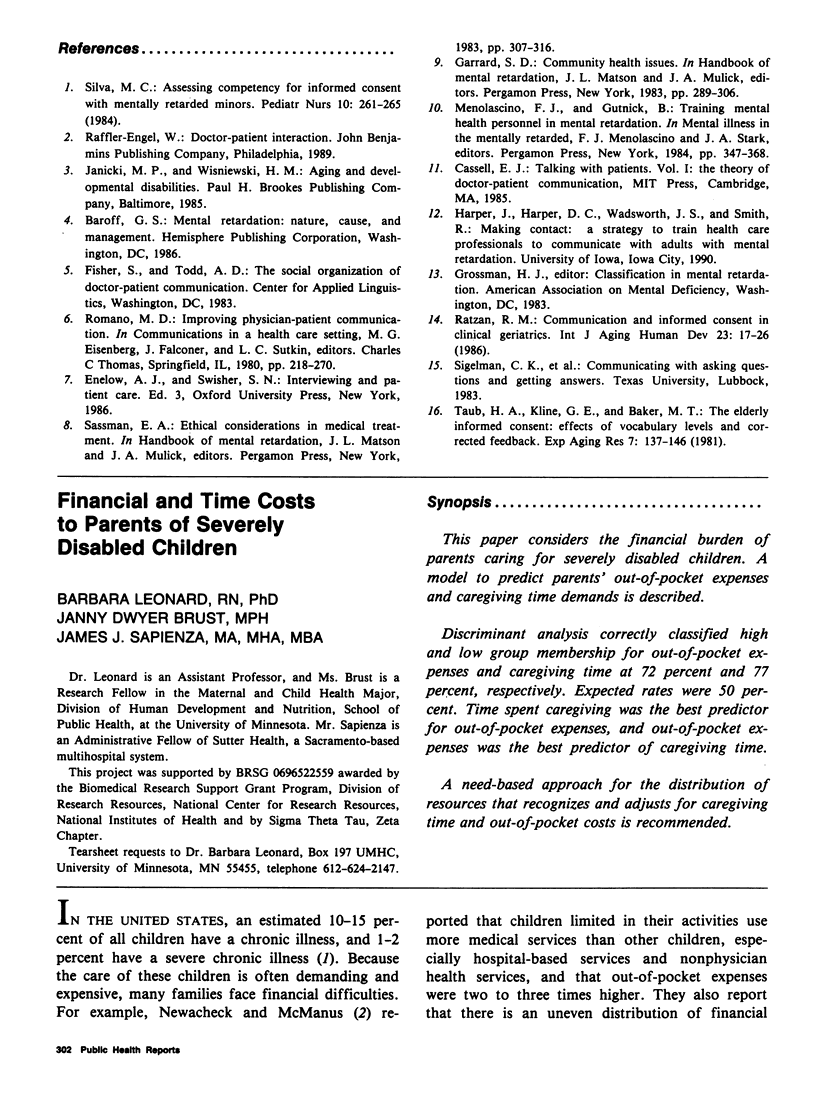
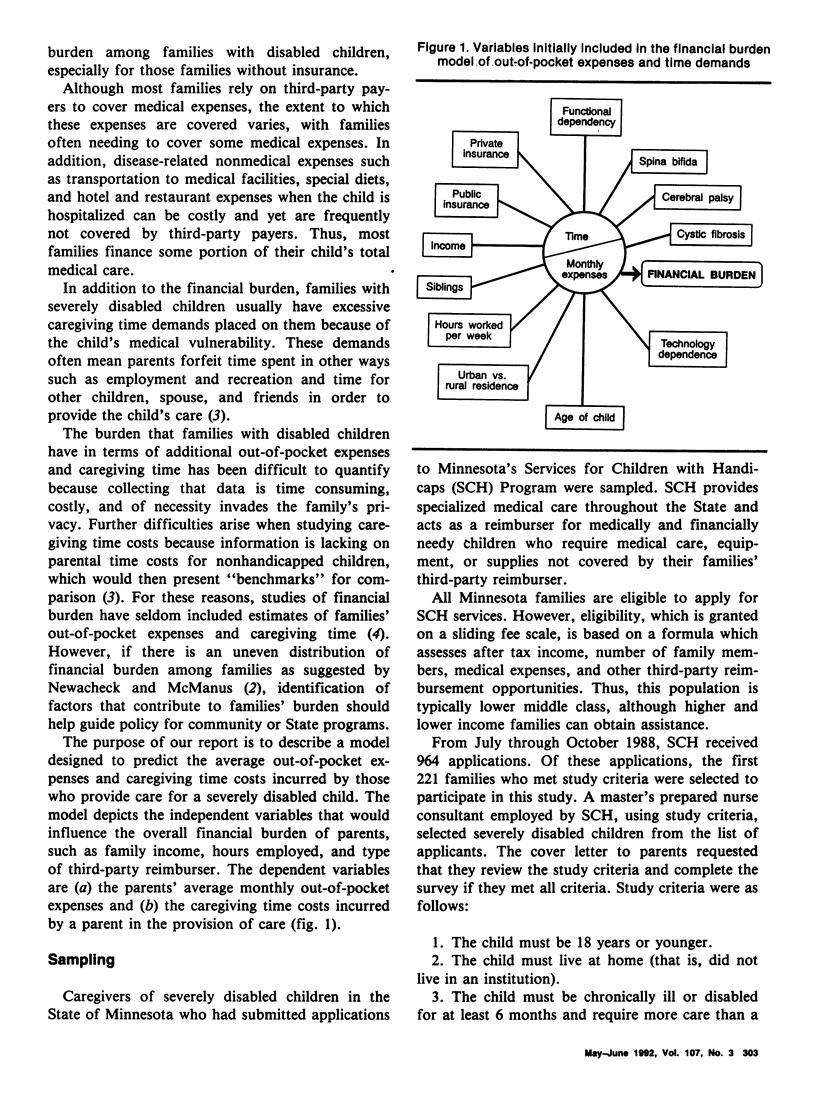
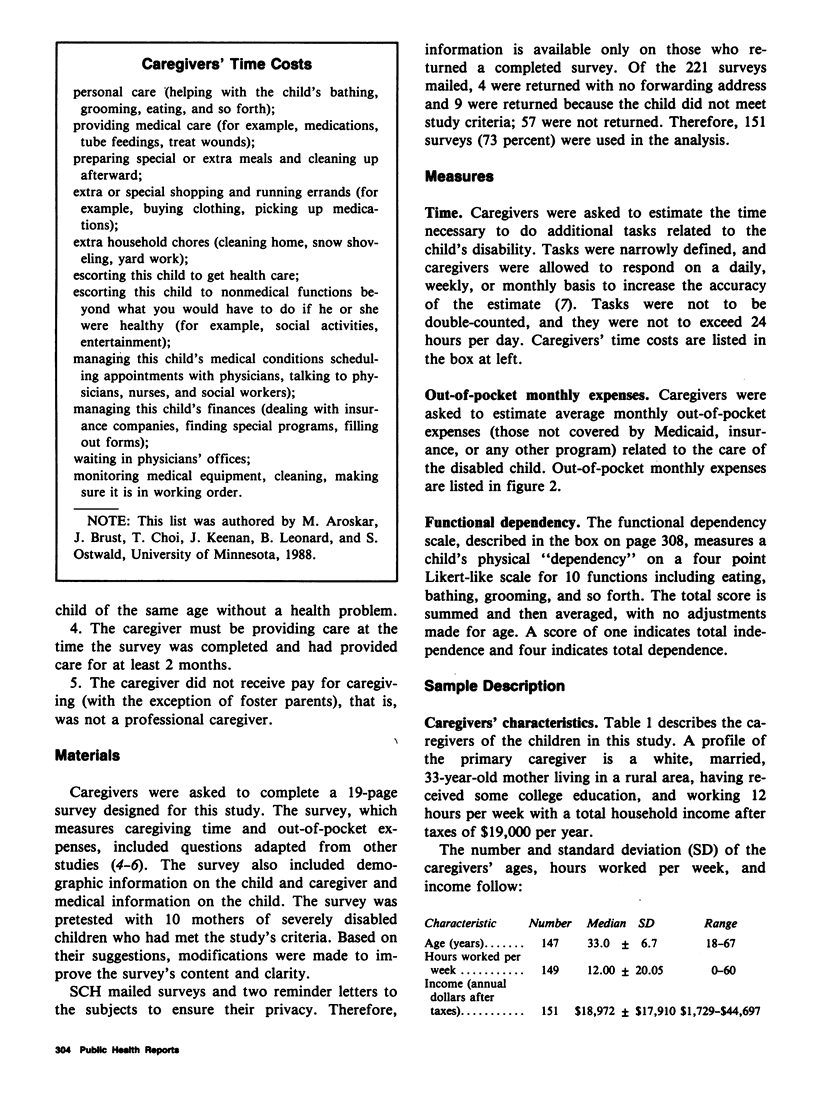
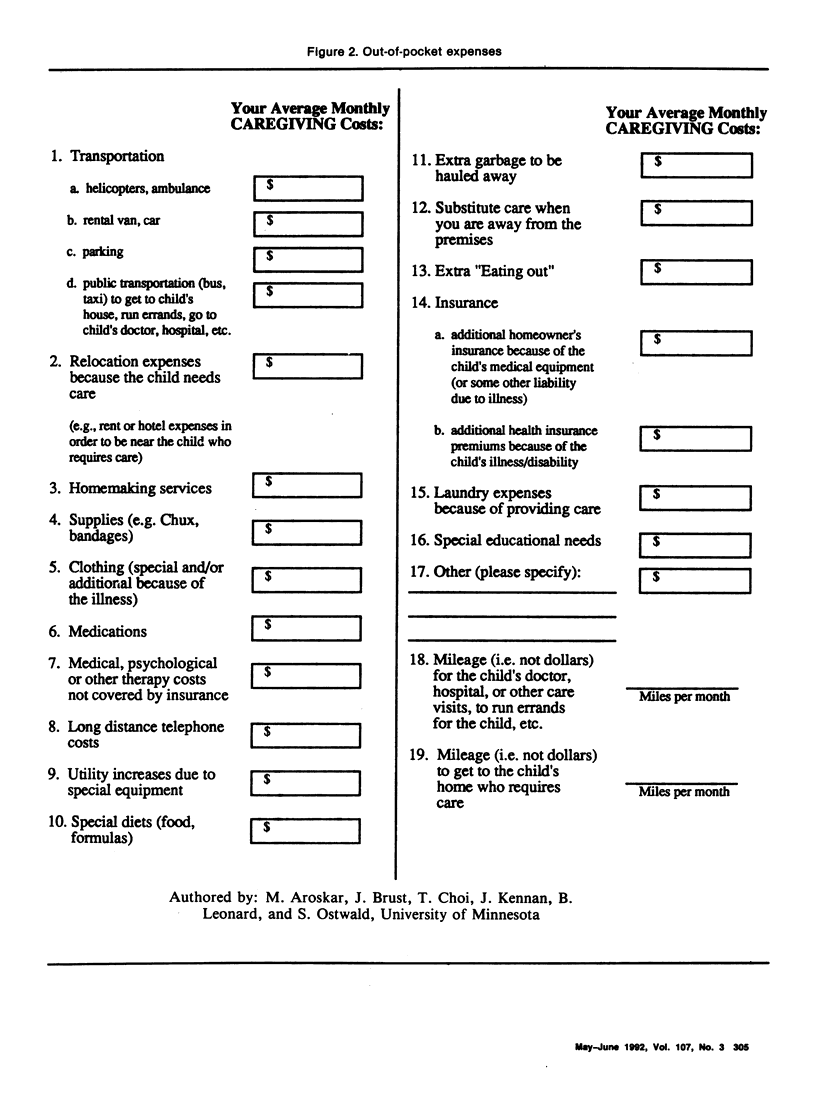

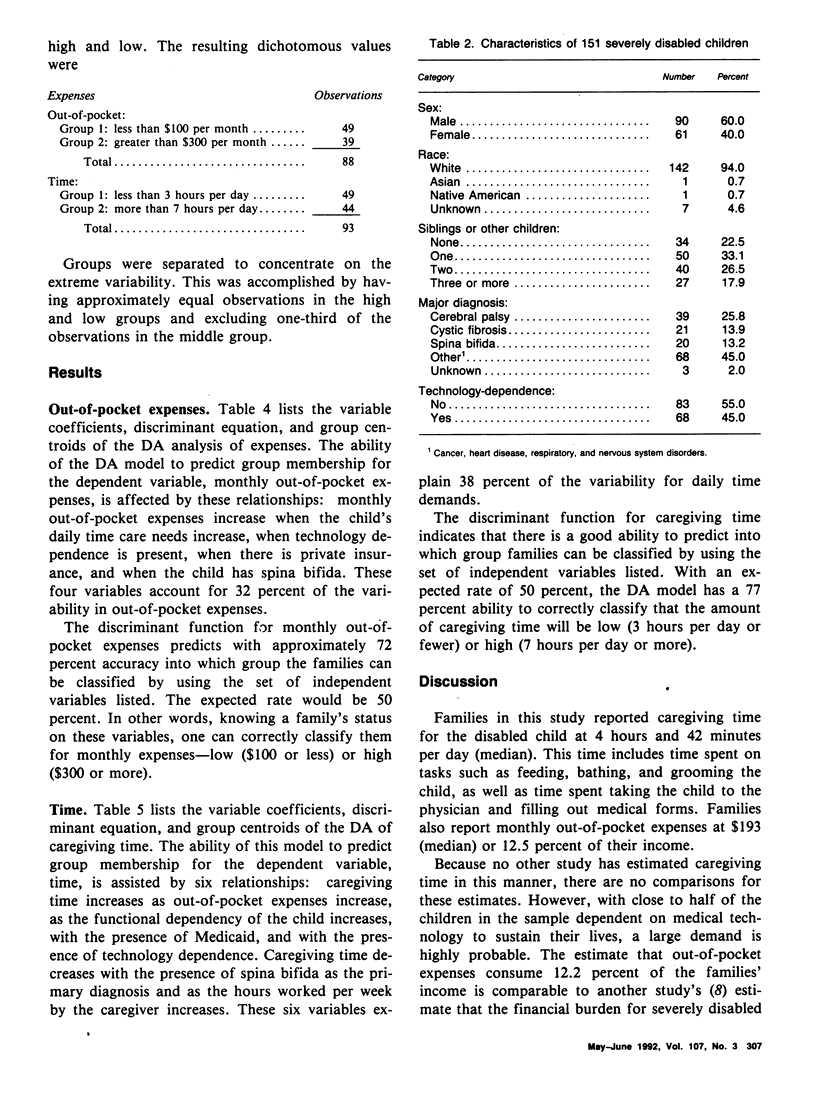

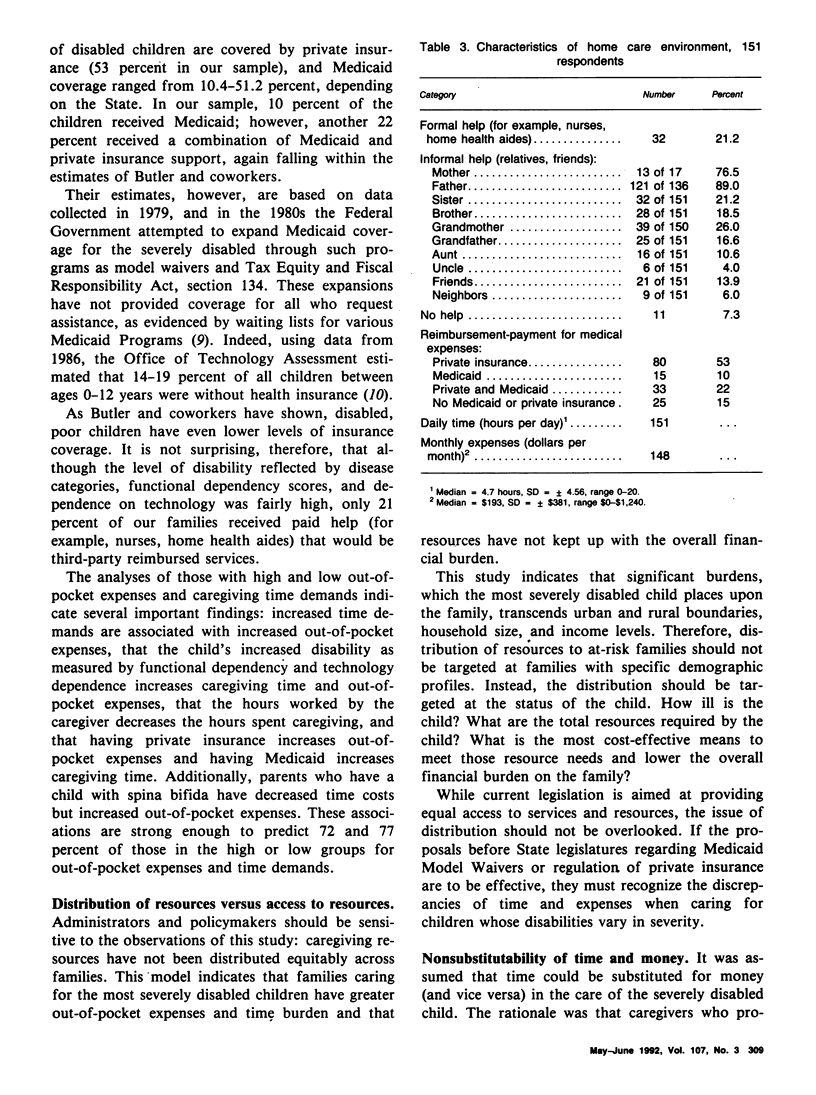
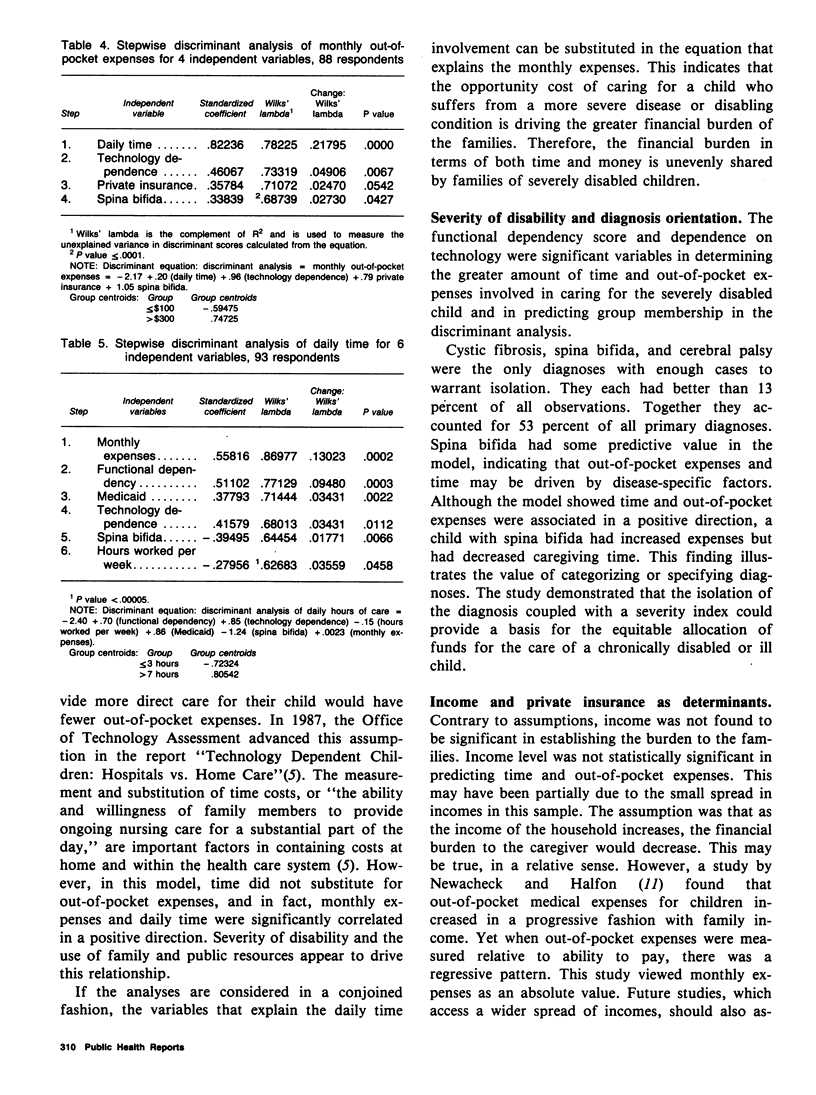
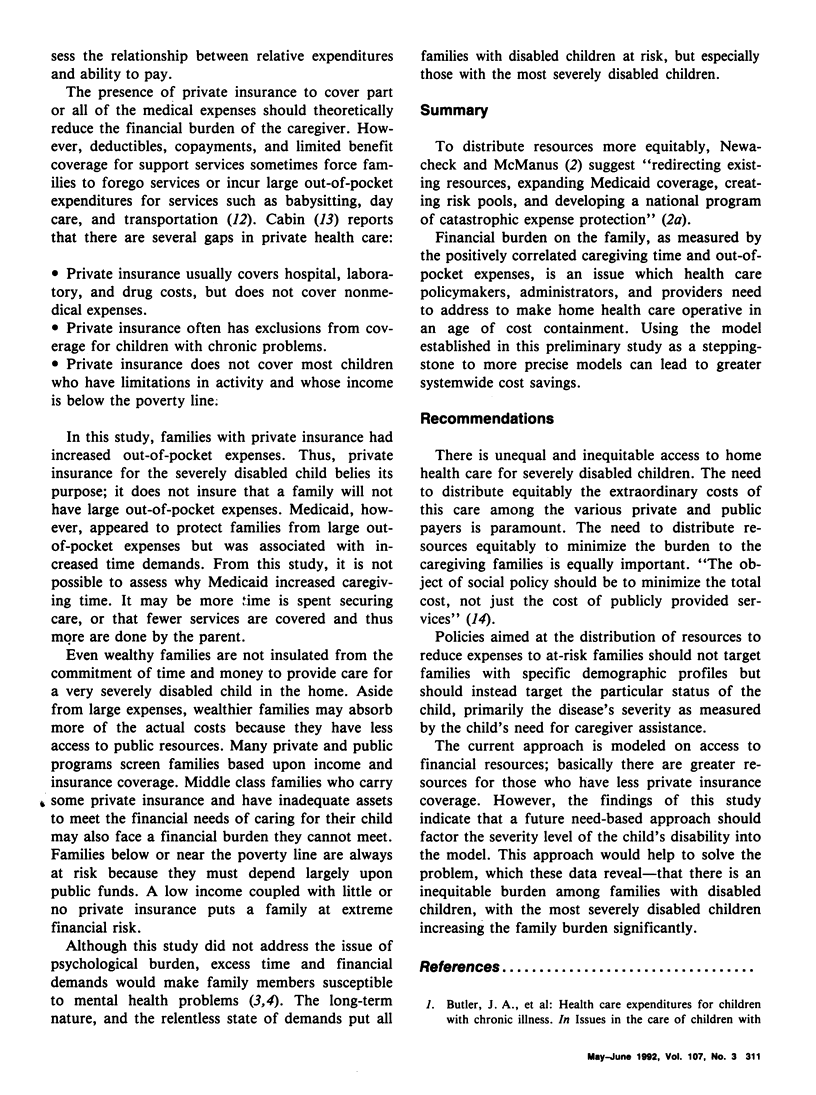
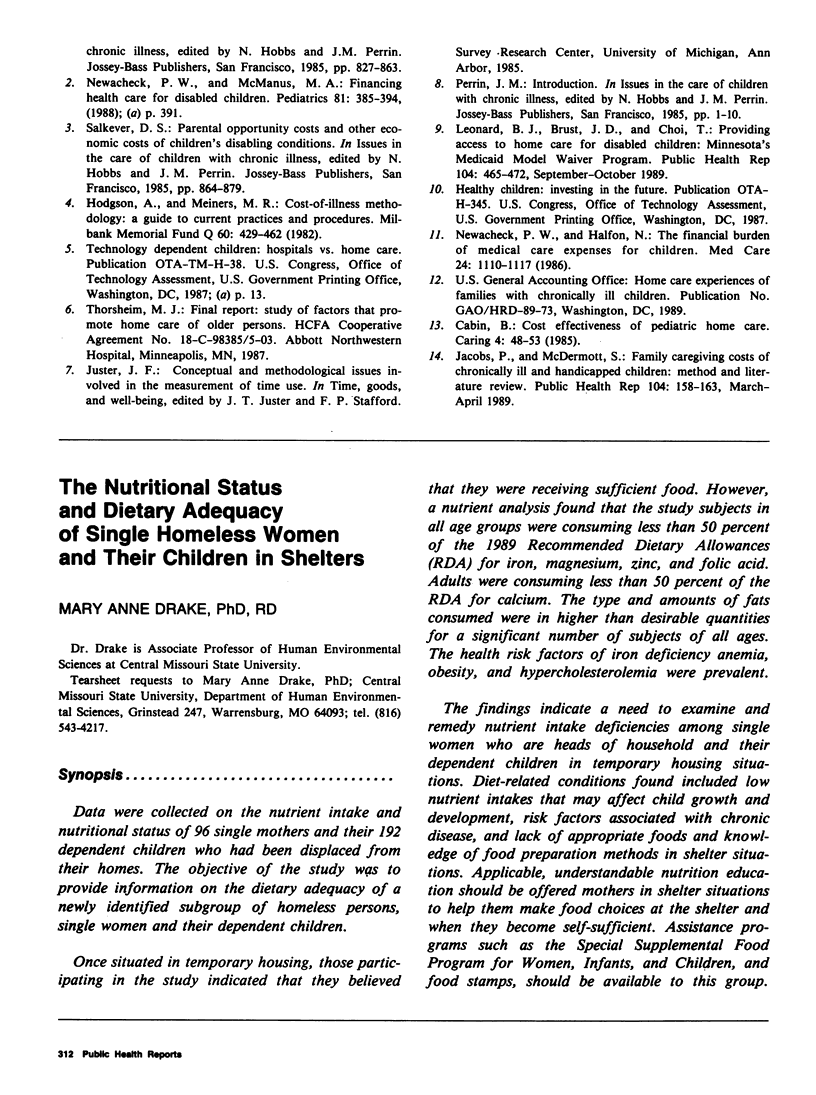
Selected References
These references are in PubMed. This may not be the complete list of references from this article.
- Hodgson T. A., Meiners M. R. Cost-of-illness methodology: a guide to current practices and procedures. Milbank Mem Fund Q Health Soc. 1982 Summer;60(3):429–462. [PubMed] [Google Scholar]
- Jacobs P., McDermott S. Family caregiver costs of chronically ill and handicapped children: method and literature review. Public Health Rep. 1989 Mar-Apr;104(2):158–163. [PMC free article] [PubMed] [Google Scholar]
- Newacheck P. W., Halfon N. The financial burden of medical care expenses for children. Med Care. 1986 Dec;24(12):1110–1117. doi: 10.1097/00005650-198612000-00004. [DOI] [PubMed] [Google Scholar]
- Newacheck P. W., McManus M. A. Financing health care for disabled children. Pediatrics. 1988 Mar;81(3):385–394. [PubMed] [Google Scholar]


